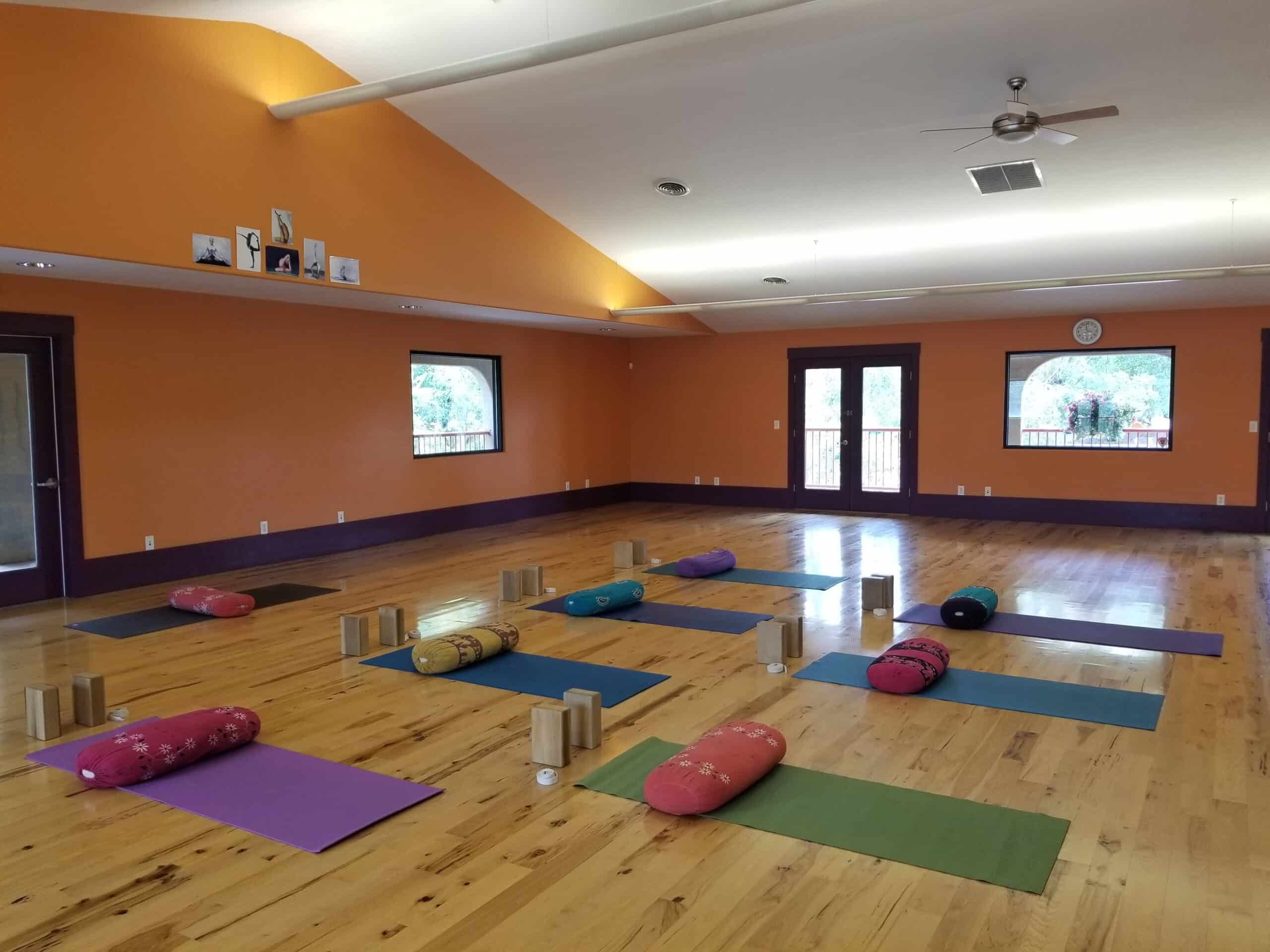Find Wholeness by Intentionally Holding Opposites | By Marja Wilson
No matter where you are, who you’re with or what you experience, there is a simple inner resource to help cope with the changing nature of reality. Taking the time to explore the opposite of what we’re feeling can be the difference between obsessing and the restoration of ease and grace.
Divisiveness is unnerving. Hostility, within ourselves and between others has its costs. The price we pay is with our health and well-being. Sensing that pulse within us, we are sometimes caught by those feelings, emotions and thoughts. The mind can paint our inner landscapes with the contentment of a safe haven or turn it into a war zone. Most of us prefer inner balance, but it’s more easily said than done. It is possible however, to move through life’s inevitable mental upheavals without ever leaving that safe haven. The first step is consciously reflecting on the full spectrum of our emotions.
Union of Opposing Forces
The joining of opposites is an important ally in the fields of health and well-being. It is a common theme in yoga, and the concept dates back thousands of years. Early texts such as the Rig Veda (1500-1200 BCE) refer to the god Shiva, who is simultaneously the destroyer and the benevolent one. From the Tao Te Ching (~4 BCE), we learn that conflict and peace is a unity of opposites, and the presocratic philosopher Heraclitus (535–475 BCE) espoused a “system of balances.” Sun Tsu’s Art of War (544 BEC) applied the concept of complementary opposites known as yin and yang for military strategy. Interestingly, mindfully balancing opposites is still used to enhance the quality of life today.
Neuropsychologist and meditator, Dr. Richard Miller, PhD. uses the notion of non-duality to help Wounded Warriors. He’s also the author of the book, The iRest Program for Healing PTSD, where Miller asks his patients to pair emotions with their opposites. He focus on post-traumatic stress disorder (PTSD), but we can apply his uncomplicated methodology to a range of routine disturbances. Dr. Miller calls it, “the welcoming of opposite feelings and emotions.”
Feelings and Emotions
In is his integrative restoration (iRest) program, Miller describes feelings as the “physical” sensations that make up our emotions. For instance, recognizing warmth and coolness, something dull/sharp, rough/smooth are all feelings that characterize emotions. Emotions are the states that emerge in response to feelings. He analogizes feelings as the ingredients of an emotion or the pot that holds the ingredients.
So let’s look at anxiety. An emotion with a few ingredients, it contains feelings such as sweaty palms, dry throat, trembling and shortness of breath. Anger’s ingredients could be a clenched jaw, tight muscles and a rapid heart rate. Research shows that chronic anger causes an inflammatory response eventually weakening the immune system and leaving us as an open target for heart disease, stroke and cancer. Richard Miller’s Welcoming Opposites of Feelings and Emotions, can help us turn an emotional witches brew into a pot of chicken soup, but before we get started, let’s shed some light on an instinctive obstacle called the negativity bias.
Negativity Bias
If you’ve ever wondered why some people automatically think the worst, there’s a good reason. DNA was biologically programmed to a negativity bias. For the purpose of survival, the reactive base brain was hardwired to perceive negative incoming more readily than the positive. A million years ago this mechanism (usually in the form of fear) served us well. It kept us alive. Mistaking a stick for a snake and leaping out of harm’s way was a much better mistake than getting bitten. Times have changed though, but the brain’s negativity bias has not evolved. The good news is that being aware of the negativity bias and how we respond to it is fundamental in lifting the weight of chronic stress off our (tight) shoulders.
Thoughts
Thoughts are a big part of stress. Because it’s impossible to ask the mind to stop thinking, consider a negative thought as an opportunity to get positive by inviting its opposite. For example: feeling fear, think courage, grief/joy, confusion/clarity, etc. An easy pair of opposites that covers lots of ground quickly are helplessness and capability. Miller’s theory is not to eradicate negativity, just release the bias. Realistically, negativity in context is still a life preserver the way our DNA intended. A quick glimpse into reckless heroics or the love of a bad diet could stand less optimism by welcoming its opposite.
Helplessness and Capability
Coursing through the most undermining river of tears flows anger, hate and fear. These emotions can be considered manifestations of helplessness. Confusion, indecision, worry and angst are also forms of helplessness and all these feelings resemble the impression of getting backed into a corner — feeling stuck. There are other varieties like jealously, non-forgiveness, possessiveness and self-destructiveness, but they are still shades of helplessness. The opposite of helplessness is capability, empowerment, pro-activeness, leadership and more. The idea of feeling capable and taking the time to experience it fully elicits mobility and flips helplessness on its head. This mental exercise is a function of executive reasoning, the utilization of the prefrontal cortex.
Neurons that Fire Together Wire Together
By using the prefrontal cortex or our “intelligent brain,” we can biologically change the way we think. By using our minds to functionally update it, Siegrid Löwel’s phrase: “Cells that fire together, wire together,” describes neuroplasticity. It is the biological aspect of changing our mind. Moving from helplessness to capability is organic because when we see things and think of things at the same time, those neuronal pathways fire in synch and intensify with repetition. That’s why phobias carry so much strength. Certain environmental triggers set thoughts ablaze, most of the time subconsciously, and when emotions catch fire, we’re toast. But, we can change this chain reaction to work in our favor with some adjustments. By manipulating our neuropathways and intentionally grouping thoughts and feelings together, a phobia can be tamed if not completely removed as the Donald Hebb’s adaptation theory of neurons and synaptic plasticity states:
“By associating thoughts with specific feelings, the entire climate of a memory changes. With repeated and persistent stimulation, increased synaptic efficacy can be learned and the chemical brain changes (and other neural tissue) will respond to external stimuli.”
Intention
The intention of our own thinking can turn chaos into a controlled benign memory. This means that when a memory surfaces and takes hold, we can replace the negative thoughts with positive ones. With repetition, the memory rewires itself, adapts to the synaptic charge and changes.
My personal experience with Miller’s pairing of opposites was hard won in the snow fields of Colorado. To start, I was fascinated with skiing the Rockies, but altitude and the sight of looking down a steep drop-off was terrifying. Acrophobia killed my joy and ambition. Nothing my ski instructor could say kept my heart from pounding with fear. I practiced layering my feelings of helplessness with owning confident exhilaration. In time not only did it improve my sport, but I learned an important neurological skill.
When feeling mad, sad, or put upon, notice the state. Tell yourself you are capable of moving through it. Imagine it, feel it and spend some time soldering the positive to the negative. Miller says you don’t need an answer or a solution, just feel it. “You are rewiring the brain and setting it up for better problem solving, the answers will come because you’re not stuck,” he states.
Resisting the complementary good diminishes the ability to live fully and appreciate the lives of others. Self-criticism can be an usher to self-compassion because welcoming opposites is the complementary field of wholeness to whatever life brings.

IMBODHI products are top-notch. Soft to the touch, hand-sewn and made of sustainably sourced fabrics. With a [...]

Subscribe to Our Tribe
Stay up to date with Y+L News, Events and special announcements.










